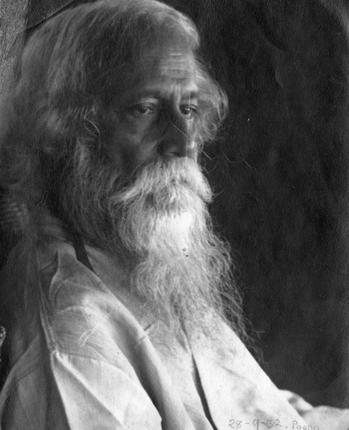100 years since 'Jana Gana Mana' was born

The year was 1911. India, particularly Bengal, had just come out of the political crisis of Partition and was coming to terms with the British decision to shift the Capital from Calcutta to Delhi. Amidst all-round protests against the Partition, people of the country were recharged once again to fight for ‘freedom.'
And then, quietly, a song took birth at a corner of Calcutta, Jana Gana Mana Adhinayaka Jaya Hey, penned by Rabindranath Tagore.
The purely indigenous song, which has enchanted and has been saluted by billions of people for the last 100 years, was first sung on the second day of the annual conference of the Indian National Congress in Calcutta on December 27, 1911. Sarala Devi Chowdhurani — Tagore's niece — intoned the song, along with a few schoolstudents, in front of the gathering of the then INC president Bishan Narayan Dar and other leaders such as Bupendra Nath Bose and Ambika Charan Mazumder.
Soon after the Congress conference, in January 1912, the song first appeared before the public under the title Bharata-vidhata in Tottvobodhini Patrika (official organ of the Brahma Samaj), of which Tagore was editor. Later that month, in a Maghotsava ceremony, it was sung again at the bard's Jorasanko residence.
Controversy
A controversy surrounding the song — that it was a paean to the British monarch — refused to die down even as it faced strong comparison with another eloquent patriotic song, Vande Mataram, composed by renowned Bengali author and reformist Bankim Chandra Chattopadhyay. In keeping with the surging patriotic emotions of the time, Vande Mataram soon became the mantra for freedom fighters.
In 1917, the Congress conference was held again in Calcutta under the presidentship of Annie Besant, founder of the Theosophical Society of India, and Tagore was invited to address the gathering. On the second day, Jana Gana Mana was rendered by Sarala Devi — introducing the song's spirit as the life-force of freedom fighters — which was in aid of instrumental music by the Mahraja Bahadur of Nattore.
Historic session
In 1919, Tagore travelled to Madanapalle in Andhra Pradesh and spent five days at the Theosophical College with Irish poet James H. Cousins, who was the principal.
On the evening of February 28, 1919, the poet, for the first time, sang the inspiring devotional song and enthralled the college authorities, who selected it as the prayer song.
Tagore subsequently translated the lyrics into English and with the help of Cousins' wife, Margaret, who was an expert in western music, set down the notation which is being followed till today.
This opened the window for the song to reach national and international audiences.
At the stroke of midnight on August 14, 1947, the historic session of the Indian Constituent Assembly opened with Vande Mataram and closed with Jana Gana Mana.
In a letter, Pandit Jawaharlal Nehru mentioned that during the General Assembly of the United Nations in New York in 1947, when the Indian delegation was asked to produce the country's national anthem, the members gave a recording of Jana Gana Mana, which was played by the orchestra in front of the world gathering and it received applause for its distinctive and dignified tune.
Selection committee
Finally, a committee was formed by the Constituent Assembly to select the National Anthem.
On January 24, 1950, when the Assembly met to sign the Constitution of India, President Rajendra Prasad officially declared Jana Gana Mana the national anthem and Vande Mataram the national song.
At the closing of the ceremony, the President, on the request of the first Deputy Speaker, Madabhushi Ananthasayanam Ayyangar, asked all members to sing the national anthem in chorus. The song was led by Purnima Banerji and sung in chorus for the first time after its adoption as our national anthem.
Assisting the long journey of the Brahma Sangeet was not smooth for Tagore. But that could never dent his philosophical approach to eternal human cry. He has engraved his deep sense of patriotism in a manner of devotion. That is why the great poet could anticipate the time and write…
“Year 1400”
A hundred years from today
who are you, sitting, reading a poem of mine,
under curiosity's sway -
a hundred years from today?
Not the least portion
of this young spring's morning bliss,
neither blossom nor birdsong,
nor any of its scarlet splashes
can I drench in passion
and despatch to your hands
a hundred years hence!
(Translated by Keataki Kushari Dyson, a well-known writer)
Keywords: national anthem, Rabindranath Tagore
You May Be Interested IN